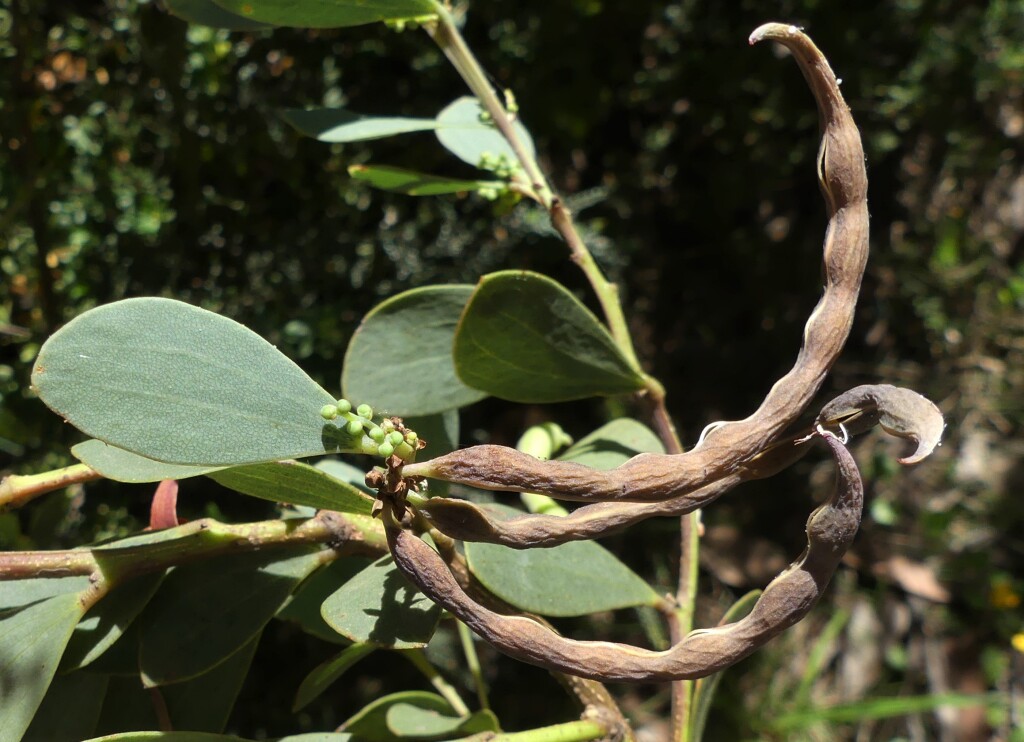Acacia alpina
F.Muell. Alpine WattleErect or widely spreading shrub, 1–2 m high. Phyllodes obovate or suborbicular, commonly asymmetric, 1.5–3.5 cm long, 8–25 mm wide, coriaceous, mostly minutely mucronate; primary veins 2–4, secondary veins reticulate, conspicuous; gland small or obscure, 2–9 mm above axil. Spikes 1–2 per axil, cylindric to obloid, 5–15 mm long, pale yellow; rachis glabrous; peduncle 1–3 mm long. Flowers 4-merous, few, scattered; sepals united, pubescent. Pods moniliform, gently curved or coiled, 3–8 cm long, 3.5–6 mm wide, dark, sometimes glaucous; seeds narrowly elliptic, 3.5–5 mm long, funicle folded 3–8 times, aril turbinate. Flowers (May–)Oct.–Nov.
VRiv, GipP, CVU, HSF, HNF, MonT, VAlp. Also NSW. Confined to alpine and subalpine areas, where sometimes locally common and occasionally forming thickets. Frequently growing on exposed sites on shallow, rocky soils.
At Mount Buffalo this species is known to hybridise with A. phlebophylla.
Entwisle, T.J.; Maslin, B.R.; Cowan, R.S.; Court, A.B. (1996). Mimosaceae. In: Walsh, N.G.; Entwisle, T.J., Flora of Victoria Vol. 3, Dicotyledons Winteraceae to Myrtaceae, pp. 585–658. Inkata Press, Melbourne.
 Spinning
Spinning

